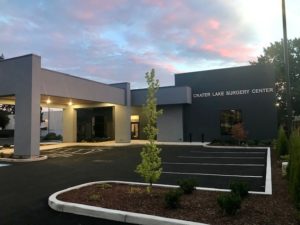Conditions We Treat
Our physicians are national leaders in the field of pain management with decades of experience in the diagnosis and treatment of even the most complex and intractable pain. We know that the same treatments may not work for everyone, and are completely committed to finding the treatment that is right for you. Whatever your situation, the cause of your pain, or the treatments you have tried before, come to see us — we are here to help.
Abdominal and
Pelvic pain
Spinal Cord
Injury
Osteoporosis
#
Hip, Leg and
Knee pain
Neuropathy and neuropathic pain
Cancer
pain
CRPS
#
Degenerative
Joint Pain
Lumbar Spinal
Stenosis
Arthritis of
the Spine
Treatments We Offer
While pain medication is helpful for some of our patients, we offer many options for the management of pain, including, but not limited to, the treatments listed below. Our physicians are leaders in the field of neuromodulation, which involves the electrical stimulation of the central nervous system to help manage pain and other chronic conditions.
We are committed to “whole patient health care,” and in addition to the advanced pain therapies we offer, we work with many patients on nutrition, exercise, physical therapy, smoking cessation, and other health and wellness programs.
Most all our interventional procedures will be done at a new state of the art ambulatory surgery center (Crater Lake Surgery Center – 833 Bennett Ave. Medford ), located next to Pain Specialists of Southern Oregon on Bennett Ave. in Medford, Oregon.

This is a state of the art 5500 square foot facility with two operating rooms, pre-op and post op bays with many accommodations.
Ambulatory surgery centers (ASCs) are health care facilities that have proven to offer patients the convenience of having outpatient surgeries, endoscopic and/or pain management procedures performed safely outside the hospital setting. ASCs have demonstrated an exceptional ability to improve quality and customer service while simultaneously reducing costs.
At a time when most developments in health care services and technology typically come with a higher price tag, ASCs stand out as an exception to the rule. “We are focused on ensuring that patients have the best /surgical procedures experience possible while providing cost effective care in our community”.
The Crater Lake Surgery Center will:
- Cut down the wait time for patients
- Provide safe and pleasant environment
- State of the art surgery suites
- Low costs for patients vs. hospitals
- Short stays and smooth patient turnaround times
- Better scheduling availability for outpatient
- Less infection risks
- To learn More visit: http://craterlakesurgerycenter.com/
Get Relief Now
All medical communications please use MyChart or please call 541-779-5228.
A referral is needed from your primary care doctor, and authorization for medical records release.
This form is for general questions and information only. (Fill out completely)
Low back pain can range from dull, intermittent, and simply annoying pain to chronic severe, life-interrupting pain in the lower back. This pain can restrict mobility and interfere with normal physical function, and quality of life. Neck pain is pain that occurs in the area of the cervical vertebrae in the neck. Because of its location and range of motion, the neck is often left unprotected and subject to injury. Pain in the back or neck area can be acute, which comes on suddenly and intensely, or chronic, which can last for weeks, months, or even years.
Arthritis of the Spine
Osteoarthritis is the most common form of arthritis, affecting millions of people worldwide. It occurs when the protective cartilage on the ends of your bones wears down over time. Although osteoarthritis can damage any joint in your body, the disorder most commonly affects joints in your hands, knees, hips and spine.
Osteoarthritis symptoms can usually be effectively managed, although the underlying process cannot be reversed. Staying active, maintaining a healthy weight and other treatments may slow progression of the disease and help improve pain and joint function.
Spinal Stenosis
With age, the spinal canal – located in the lower back – can narrow, resulting in spinal stenosis. The narrowing process, which is gradual, reduces the space available for the spinal cord and nerves. If only a small amount of spinal narrowing occurs, no pain will result. Spinal stenosis may lead to leg pain, numbness, and/or tingling. In advanced cases, weakness may also be present.
Abdominal and Pelvic Pain
Chronic abdominal pain, also known as chronic functional abdominal pain, is pain caused by an unexplained source. Chronic abdominal pain is the diagnosis when appendicitis, aortic dissection, aortic aneurysm, ulcers, Crohn’s disease, colon cancer, irritable bowel syndrome (IBS), diverticulitis and other diagnoses have been ruled out.
Chronic pelvic pain (CPP) is defined as nonmenstrual pelvic pain of more than three months’ duration that is severe enough to cause functional disability, and require medical or surgical treatment. Its hallmark is deep-seated, aching pain that often interferes with sleep and work, leads to urinary urgency and frequency, and causes pain with sex and/or urination.
Spinal cord injury
Spinal cord injury is damage to the spinal cord as a result of a direct trauma to the spinal cord itself or as a result of indirect damage to the bones, soft tissues, and vessels surrounding the spinal cord. The spinal cord is the major bundle of nerves carrying nerve impulses to and from the brain to the rest of the body. Rings of bone called vertebrae surround the spinal cord. These bones constitute the spinal column (back bones).
Spinal cord damage results in a loss of function, such as mobility or feeling. In most people who have spinal cord injury, the spinal cord is not severed. Spinal cord injury is not the same as back injury, which might result from causes such as pinched nerves or ruptured disks. Even when a person sustains a break in a vertebra or vertebrae, there might not be any spinal cord injury if the spinal cord itself is not affected.
Osteoporosis
Osteoporosis (“porous bone”) is a disease that weakens bones, putting them at greater risk for sudden and unexpected fractures. Osteoporosis results in an increased loss of bone mass and strength. The disease often develops without any symptoms or pain, and it is usually not discovered until the weakened bones cause painful fractures. Most of these are fractures of the hip, wrist, and spine.
Although osteoporosis occurs in both men and women, women are four times more likely to develop the disease than men. After age 50, one in two white women, and one in four white men, will have an osteoporosis-related fracture in their lifetimes. Another 30 percent have low bone density that puts them at risk of developing osteoporosis (including African-Americans).
Osteoporosis is responsible for more than 2 million fractures each year, and this number continues to grow. There are steps you can take to prevent osteoporosis from ever occurring. Treatments can also slow the rate of bone loss if you do have osteoporosis.
Arthritis of the Spine
Osteoarthritis is the most common form of arthritis, affecting millions of people worldwide. It occurs when the protective cartilage on the ends of your bones wears down over time. Although osteoarthritis can damage any joint in your body, the disorder most commonly affects joints in your hands, knees, hips and spine.
Osteoarthritis symptoms can usually be effectively managed, although the underlying process cannot be reversed. Staying active, maintaining a healthy weight and other treatments may slow progression of the disease and help improve pain and joint function.
Neuropathy and neuropathic pain
Neuropathic pain can result after damage to or dysfunction of the nervous system. Pain can rise from any level of the nervous system. These levels are the peripheral nerves, spinal cord, and brain. Pain centers receive the wrong signals from the damaged nerve fibers. Nerve function may change at the site of the nerve damage, as well as areas in the central nervous system (central sensitization).
Neuropathy is a disturbance of function or a change in one or several nerves. About 30 percent of neuropathy cases are caused by diabetes. It is not always easy to tell the source of the neuropathic pain. There are hundreds of diseases that are linked to this kind of pain.
Cancer Pain
Pain is most often caused by the cancer itself. The amount of pain you have depends on the type of cancer, its stage (extent), and your pain threshold (tolerance for pain). People with advanced cancer are more likely to have pain. Pain can also be caused by cancer-related treatment or tests. You may also have pain that has nothing to do with the cancer or its treatment. Like anyone, you can get headaches, muscle strains, and other aches and pains.
CRPS
Complex regional pain syndrome (CRPS), formerly known as Reflex sympathetic dystrophy syndrome (RSDS), is a chronic pain condition in which high levels of nerve impulses are sent to an affected site. Experts believe that CRPS occurs as a result of dysfunction in the central or peripheral nervous systems.
CRPS is most common in people aged 20 to 35. The syndrome also can occur in children; it affects women more often than men. CRPS may be heightened by emotional stress. There is no cure for CRPS. The symptoms of CRPS vary in their severity and length. One symptom of CRPS is continuous, intense pain that gets worse rather than better over time. If CRPS occurs after an injury, it may seem out of proportion to the severity of the injury. Even in cases involving an injury only to a finger or toe, pain can spread to include the entire arm or leg. In some cases, pain can even travel to the opposite extremity.
Degenerative Joint Pain
Joint pain can be discomfort, pain or inflammation arising from any part of a joint — including cartilage, bone, ligaments, tendons or muscles. Most commonly, however, joint pain refers to arthritis or arthralgia, which is inflammation or pain from within the joint itself. Joint pain can be mild, causing soreness only after certain activities, or it can be severe, making even limited movement, particularly bearing weight, extremely painful.
Spinal Cord Decompression
Pain Specialists of Southern Oregon offer cutting edge care–the Vertiflex Procedure–for the treatment of moderate lumbar spinal stenosis. The Vertiflex Procedure uses a small implant (the Superion® Indirect Decompression System) that is placed inside the spine to help prevent reduction of the space when standing or walking. This provides relief by lifting pressure off the nerves to alleviate leg and back pain symptoms that often accompany the condition.
Lumbar Spinal Stenosis
(LSS) is a narrowing of the spinal passage caused by the natural degeneration of discs, typically as a result of aging. This condition may also appear in younger patients, often due to developmental causes. Changes in the shape of the spinal canal can cause the compression of nerves in the lumbar spine, leading to lower body pain.

